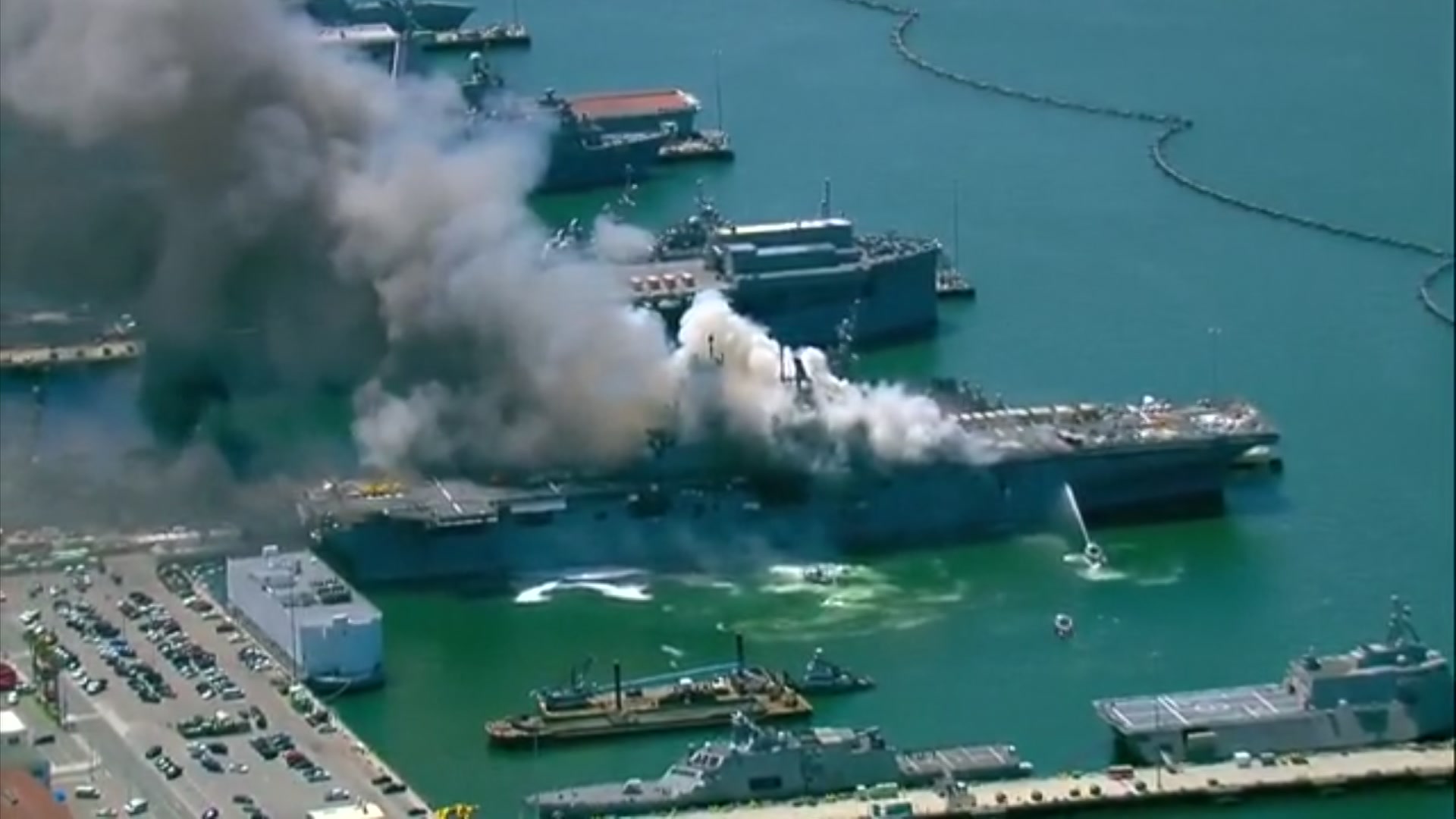After a week of testimony from witnesses meant to prove that Ryan Sawyer Mays set the fire that destroyed USS Bonhomme Richard, the defense team began presenting their case Monday in the sailor's arson trial.
Mays, a seaman recruit, faces charges of arson and willful hazarding of a vessel for allegedly setting the blaze that began July 12, 2020, and burned for several days while the warship was docked at Naval Base San Diego. The fire destroyed the massive, billion-dollar assault ship. He has pleaded not guilty to all charges.
Eight witnesses took the stand Monday to help paint a picture of what happened. The first five were all either active or former sailors who were based on USS Bonhomme Richard that fateful summer. The sailors shared what, if any, interaction they had with Mays on the day and days that followed when Bonhomme Richard caught fire.
Get San Diego local news, weather forecasts, sports and lifestyle stories to your inbox. Sign up for NBC San Diego newsletters.
Last week the U.S. government brought on a U.S. Navy sailor who testified that Mays was the last person he saw go into a lower vehicle storage area of USS Bonhomme Richard before that massive fire started.
The defense however did bring up inconsistencies in that sailor’s story and claimed that NCIS was pressuring him because there was “a lot riding on his testimony.” On Monday, a former Navy sailor, Matthew Gonzalez, also testified that he too felt nervous during his NCIS interview because he said interviewers accused him of causing the fire.
Another sailor called to testify by the defense was present when a similar fire started on USS Essex before USS Bonhomme Richard went up in flames. The ships were docked about a mile away from each other at the time.
A charred mattress was found aboard the Essex, an investigator testified, adding that they looked into a possible connection between the two fires but no evidence was found.
Mays, who is still on active duty, gave up the right to a trial by jury and chose to be tried by a military judge alone. The trial is expected to last two weeks and Mays faces up to life in prison if convicted.
He spoke briefly to NBC 7 during a break in proceedings on Sept. 19. "If you have any questions, feel free to contact my legal counsel but I just wanna say thanks guys, I appreciate you."
Prosecutors have alleged that Mays was "disgruntled" with the Navy after dropping out of the SEAL training program.
USS Bonhomme Richard
Cmdr. Leah O'Brien, for the prosecution, described the alleged arson in her opening statement as "a mischievous act of defiance gone wrong." After failing to become a Navy SEAL, Mays was assigned to Bonhomme Richard's deck department, a job he had "a visceral hatred" for, she alleged.
The prosecutor said the ensuing investigation left "no doubt this fire was arson" and was most likely caused by touching an open flame to combustible material, as well as using an accelerant like paint thinner or gasoline.
His defense team is attempting to cast doubt on the government's narrative on how the fire started. His lawyer made a motion during the first week of trial to include as evidence a fire that started 18 days before Bonhomme Richard went up in flames. The lawyer argued it could prove there was another sailor who could have started the fire.
At an Article 32 hearing held last year at the base, prosecutors alleged the blaze was sparked by someone touching an open flame to an ignitable liquid applied to tri-wall containers in the Lower V.
Defense expert witnesses challenged findings that the blaze was an incendiary -- or deliberate -- fire, and said further analysis of the scene should have been completed before investigators ruled out possible accidental causes of the blaze.
While Mays is the only person criminally charged in connection with the fire, the Navy issued a letter of censure earlier this year to the former commander of its U.S. Pacific Fleet, alleging leadership failures stemming from the fire, and also issued 27 "individual disposition decisions" regarding fire prevention, readiness and response efforts aboard the ship.


